The dryer does not collect condensation
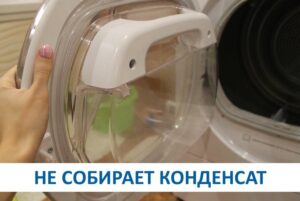 Sometimes, when the dryer is first started, users cannot understand where it removes condensate. The container intended for collecting water remains empty. What could be the problem?
Sometimes, when the dryer is first started, users cannot understand where it removes condensate. The container intended for collecting water remains empty. What could be the problem?
We'll tell you what to do if condensation does not collect in your dryer. Let's figure out what could cause this behavior of the “home assistant”. Let's talk about the design of modern dryers.
The dryer is running but the condensate tank is empty
Users are surprised to notice that the machine has completely dried the laundry, and there is no condensation in the special container. Why might this happen? What should you pay attention to first?
Condensation may not occur if the dryer is loaded with very few items, such as a couple of sheets or towels. Then there will be nothing to accumulate in the container. The solution is to completely “clog” the dryer drum, and check the tray at the end of the cycle.
Also, there will be no water in the container after drying light, synthetic products. Such items come out of the washing machine semi-dry. Therefore, you will not notice any condensation.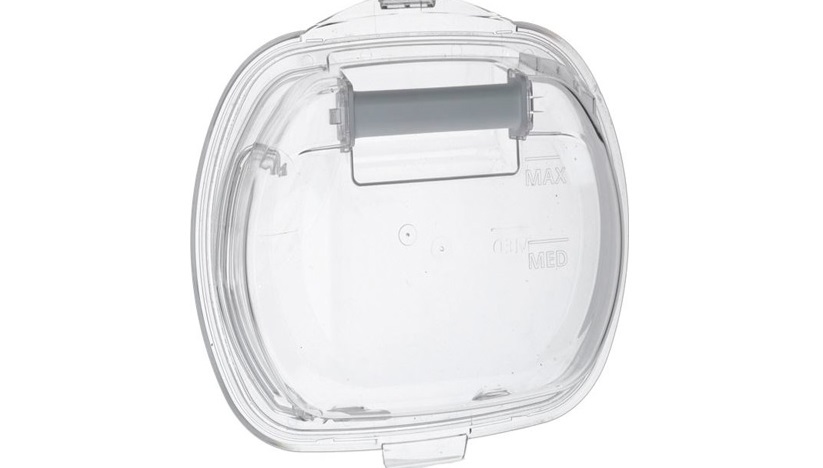
The next possible reason is that the machine is connected to the sewer. Perhaps the technician installed the dryer and forgot to warn about it. Then the condensate will immediately drain into the common house pipe.
In this case, there is no need to clean the container.
Be sure to look under the dryer to see if there is water there. It is possible that the device is not connected to the sewer, but at the same time the function of draining condensate into the pipe is activated. Then everything will flow out through the drain hose onto the floor. In such a situation, reconfigure the “home assistant”.
What other reasons are possible? Condensate may not flow into the container due to clogged pipes or drain hose. This occurs when the dryer is used carelessly and the user neglects to clean the fluff filters.
The solution to the problem is clear - you need to clean the clogged elements. Access to the fluff filters is free, but to get to the pipes and hose, you will have to partially disassemble the dryer body.
The drain pump is responsible for pumping condensate. In drying mode, the pump operates continuously, so it may fail. Also, sometimes foreign objects get into the element. What will be the solution to the problem:
- flushing the drain pump;
- replacing the pump (if it is mechanically damaged).
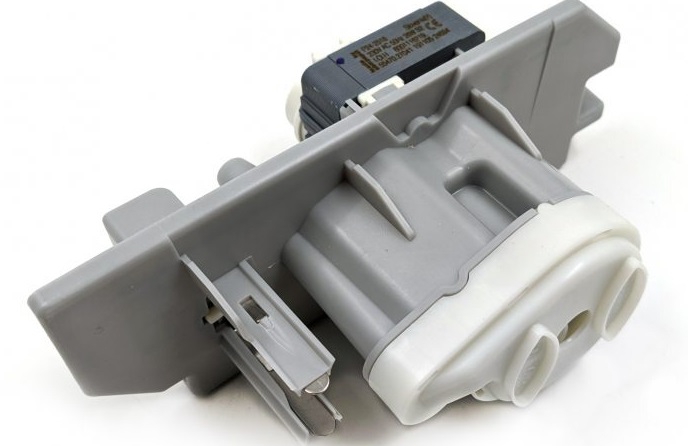
And finally, the problem may be in the control module. This is the most serious failure that affects the operation of all components of the dryer. The board does not accept information received from the sensors and does not give a command to drain water.
It is recommended to entrust repair of the control module to specialists. Without sufficient experience and knowledge, it is better not to meddle with the electronics of the dryer. Otherwise, the situation can only get worse. The technician will perform diagnostics, repair the board, or reflash the dryer.
How does the dryer work?
It is better for any user to understand the structure of the dryer. This will allow you to notice problems in the operation of the equipment in a timely manner and independently diagnose the device. The structure of modern dryers is similar. Of course, it may differ depending on the brand, but most machines are made according to the same pattern.
You can familiarize yourself with the structure of the dryer in the instructions for the equipment.
The user manual describes what elements the dryer consists of.There is also information about malfunctions that may occur and how to eliminate them. Any modern drying machine consists of the following elements: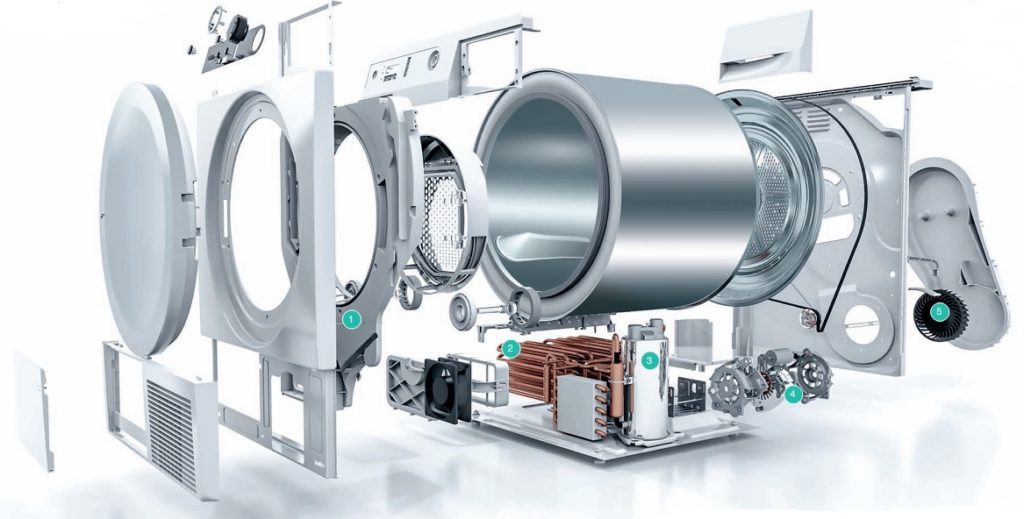
- dashboard (there is a digital display, additional option buttons, a rotary mode switch, indicators);
- dryer drum (in design it is no different from a washing drum; there are stiffening ribs inside. Some models have built-in lighting);
- heat exchanger (cold and hot air flows through it in isolation. Thanks to this, the laundry is dried, forming condensation);
- heating element (the part heats the air before it enters the drum of the dryer);
- fan (the element blows air masses in the desired direction, due to which the air flow quickly and correctly reaches its goal);
- drive mechanism (a belt connects the drum shaft and the motor, which ensures rotation of the dryer’s working capacity).
These are the most significant elements. Of course, the list is not complete. Any dryer has a container to collect condensate. The tray can be located at the top or bottom of the machine.
The condensate container must be emptied periodically. If this is not done in time, a leak will occur. The tray has a retractable mechanism and can be removed from the machine as simply as possible, without effort.
Some modern dryers can be connected directly to the sewer, so there is no need to clean the condensate container.
Also, any dryer has air intakes. They are equipped with lint filters that collect all the debris that gets into the system. The filter element must be cleaned at least once a month, preferably every 2 weeks.
The “heart” of the dryer is the electric motor.It is the engine that determines the power of the device and the maximum rotation speed of the drum. The “brain” of the machine is the control board. The module fully controls the operation of the system, being responsible for the timely submission of commands to certain SM nodes.
Operating a dryer is a lot like using a washing machine. Necessary:
- open the hatch door;
- load things into the drum (without exceeding the maximum permissible weight);
- select the desired drying mode;
- start the cycle.
True, not water, but warm air will begin to flow into the tank. It also eliminates the step of adding detergent. And the drum will rotate at a speed of only 100 rpm.
As for modes, dryers usually have about ten of them. Each algorithm is designed for a specific type of fabric and type of clothing. The programs differ in duration and air heating temperature.
What happens in the dryer after the cycle starts:
- the fan begins to move air through the fluff filters to the heating element;
- The heating element heats the machine to 50-70 degrees;
- the fan directs hot air to the clothes in the drum;
- the air flow is saturated with moisture from the laundry and goes to the heat exchanger;
- in the heat exchanger, the air “throws off” the water and is sent back to the heater.
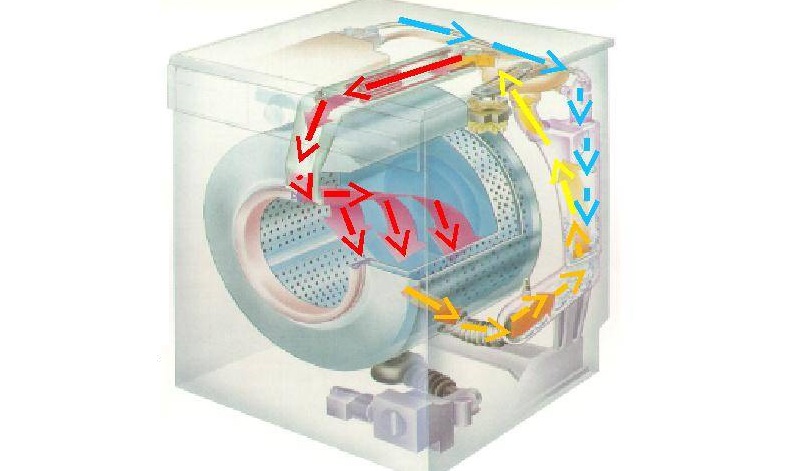
All actions are repeated cyclically until the laundry is dried to the desired level. When finished, the dryer beeps. Next, all that remains is to unload the machine and put things in the closet
The frequency of cleaning the lint filter largely depends on the intensity of use of the dryer. It is better to remove debris from the tray after every 5-6 cycles. This is necessary so that air can circulate freely throughout the machine.
You must also remember to empty the condensate container.Preferably after each use of the device. It is not recommended to leave water inside the dryer for a long time.
Also, you cannot run several dryers in a row. Manufacturers recommend taking a break between cycles of 15-20 minutes. During this time, the machine will cool down and be ready to perform a new task.
Interesting:
Reader comments
- Share your opinion - leave a comment
Categories
Washing machine repair


For buyers

For users

Dishwasher

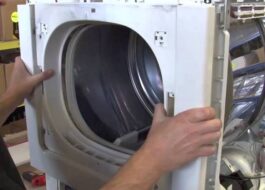
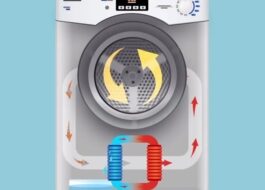


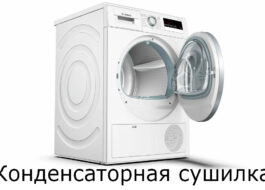
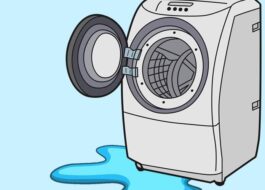










Add a comment